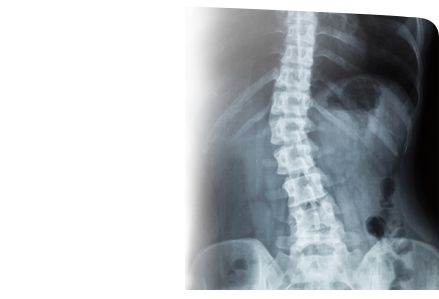A compression fracture of the vertebra occurs when the bones of the spine (vertebrae) collapse. Most commonly, these fractures occur in the thoracic or the middle portion of the spine.
Causes
A common cause of compression fracture in the spine is osteoporosis. This is a condition which makes the bones weak and unable to sustain normal pressure. Traumatic injury to the spine such as from a fall or motor vehicle accident can also cause fractures. Metastatic spread of cancer to the bones of the spine is another cause of vertebral fractures. The cancer leads to destruction of part of the vertebra thus weakening the spine.
Symptoms
The symptoms of a compression fracture include severe pain in the back, arms, and legs. If the spinal nerves have been injured, there may be associated numbness and a feeling of weakness. The pain will be milder in cases of osteoporotic fractures.
Diagnosis
Your doctor will make a diagnosis and determine the cause of pain based on your complete medical history and physical examination. Some of the diagnostic tests that may be recommended include:
- X-ray of the spine: X-ray helps to locate the site where the vertebra is broken.
- CT and MRI scan: These are done to confirm that there is no nerve injury.
- Bone scan: Bone scan helps to estimate the age of fracture. If a bone scan shows older fractures that have healed, it indicates the possibility of osteoporosis.
- Neurological examination: It involves checking for reflexes, muscle strength, and sensory perception. Any abnormality indicates damage to the nerves.
Treatment Options
Conservative Treatment
The conservative treatment modalities for compression fractures include pain medications, rest, and use of braces or back support.
Minimally Invasive Procedures
Vertebroplasty and Kyphoplasty are the minimally invasive procedures performed to treat compression fractures.
Vertebroplasty involves insertion of special cement into the broken vertebral body. It reduces pain and improves the strength of the vertebral body.
Kyphoplasty involves sliding a tube with a deflated balloon at its end into the broken bone. The balloon is then inflated to increase the height of the broken vertebra. Bone cement is injected into the space created by the balloon in order to hold the vertebra in its restored height.
Surgical Treatment
Spinal surgery is considered as an option in severe compression fractures where more than half of the vertebral body height is lost. Surgery becomes necessary to prevent bone from impinging on to the spinal nerves. Internal fixation may be done to support the vertebra in proper position during healing.





















